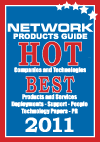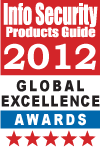Before you dive in to the cloud, make sure your network is secure and managed! We are seeing enterprises and SMBs everyday adopting new cloud computing models to help further business opportunities, raise profit margins, etc., however, neglecting to take into consideration security and policy measures. Now IT managers are quickly looking for ways to secure their company’s internal data, particularly for remote employees who have free access to the cloud and services, while still enjoying the benefits of the cloud.
Remote employees are a concern for IT managers because stored information is at high risk for data loss and leakage via online activity. One way to enforce security measures is through a VPN. This ensures that sessions are secured both in and out of the office, while giving staff the adequate access they need and the opportunity to share important data securely within the cloud and across the network. This also maintains productivity levels for mobile workers as well as businesses that need to comply with specific regulatory requirements.
IT managers can also guard their business from data loss and leakage by implementing a personal firewall that controls network traffic to and from a computer, permitting or denying communications based on a security policy. Furthermore, remote workers accessing the cloud remotely or from hotspots can fend off Internet attacks with personal firewalls.
In terms of the cloud, business managers and entrepreneurs need to continuously look further than advised guidelines. Those who do will experience the true benefits of using the cloud including improved corporate social responsibility and dramatically reduced IT spending.





